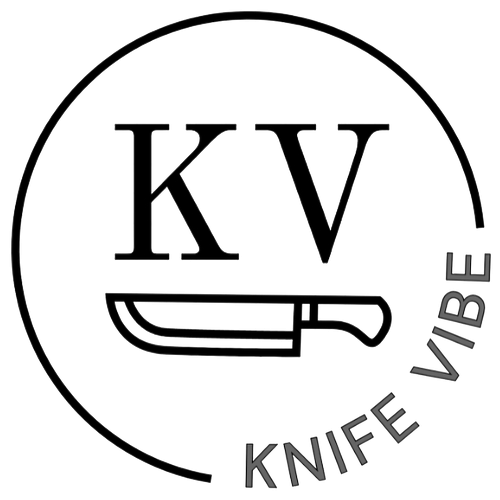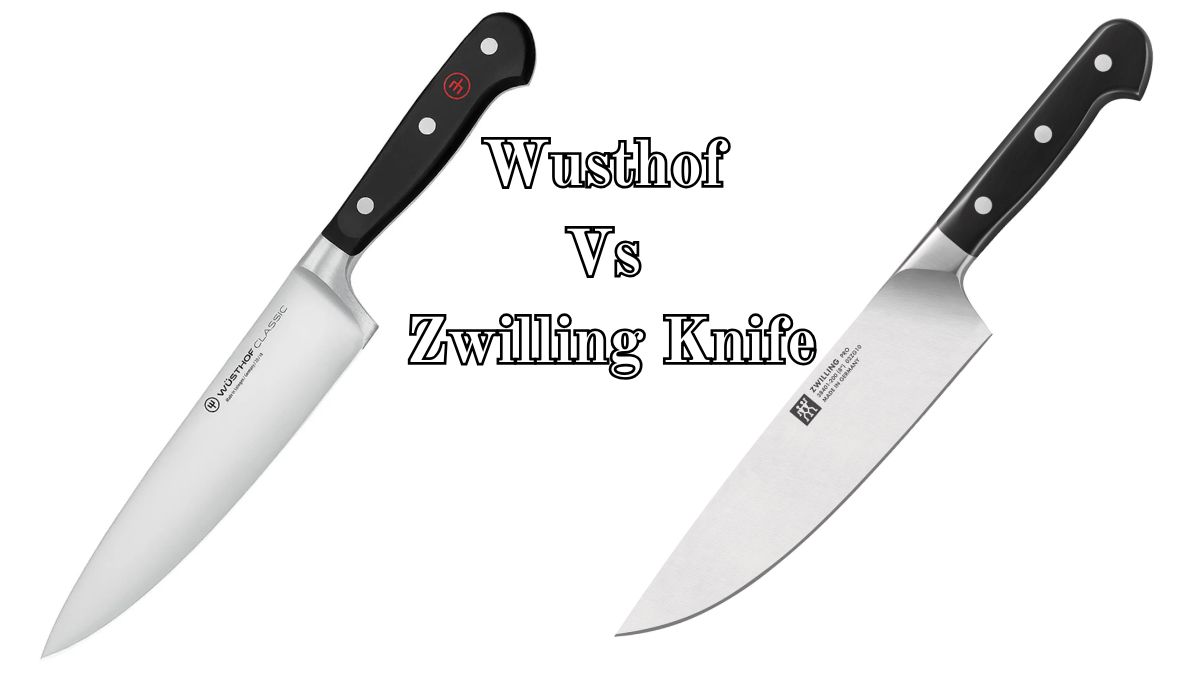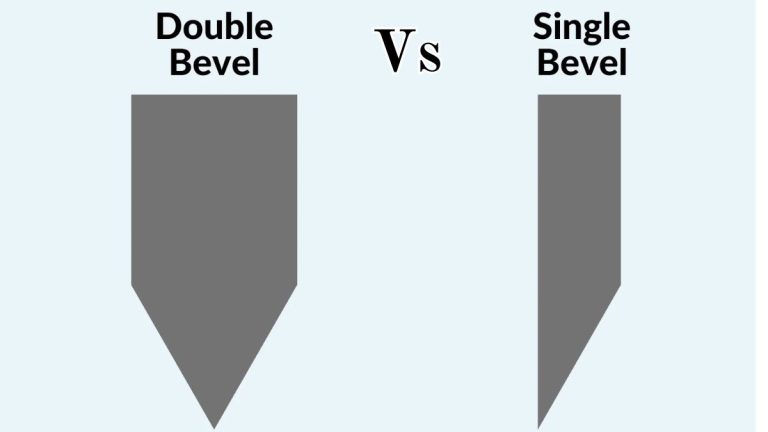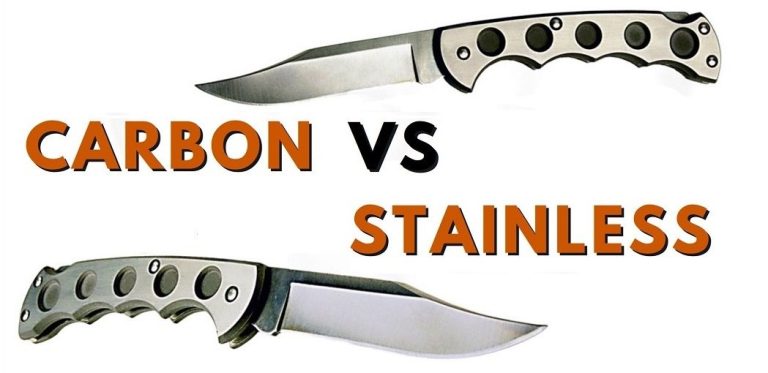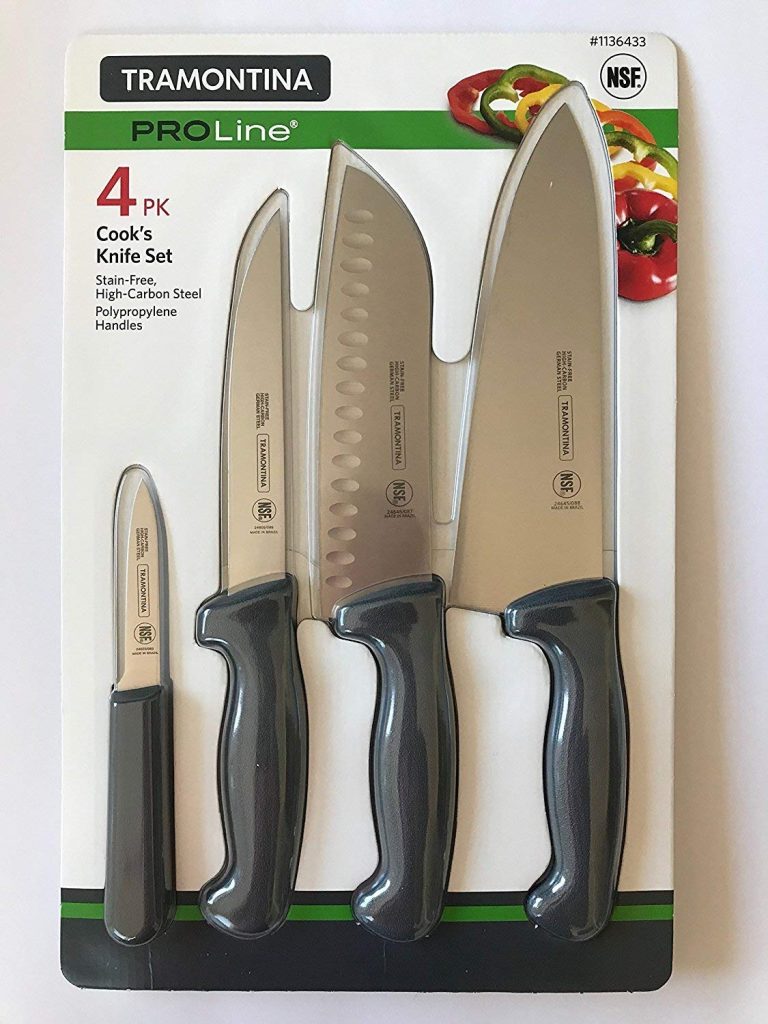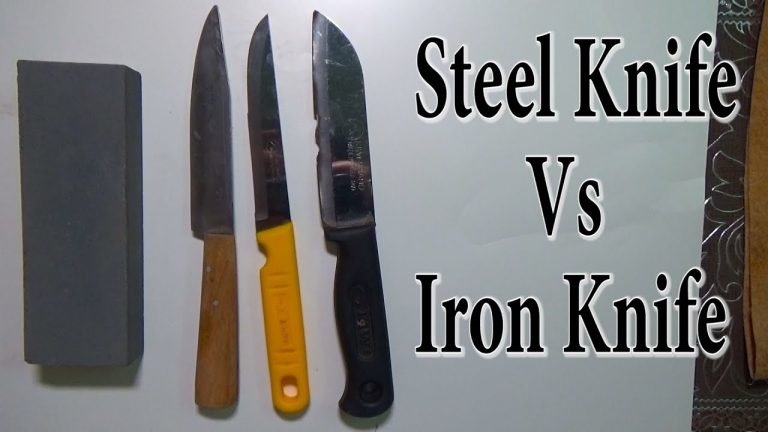Wusthof Vs Zwilling: Which Knife Brand Reigns Supreme?
When it comes to kitchen knives, Wusthof and Zwilling are top choices. Both brands have loyal fans and high-quality products.
Choosing between Wusthof and Zwilling can be challenging. Each brand offers unique features and advantages. Understanding the differences helps you make an informed decision. In this comparison, we will explore the key aspects of both brands. We will discuss their history, craftsmanship, and product lines.
This will help you decide which knife best fits your needs. Whether you are a home cook or a professional chef, finding the right knife is essential. Let’s dive into the details and see which brand stands out for you.

Credit: prudentreviews.com
Introduction To Wusthof And Zwilling
Choosing the right kitchen knife can be a daunting task. Two of the most renowned brands in the industry are Wusthof and Zwilling. Both have a rich history and strong brand philosophies. This section will introduce you to the origins and guiding principles of these two giants.
Brief History
Wusthof was founded in 1814 in Solingen, Germany. The company has been family-owned for seven generations. Known as the “City of Blades,” Solingen is famous for its knife-making tradition.
Zwilling was established earlier, in 1731, also in Solingen. It is one of the oldest brands in the world. Zwilling has expanded globally, acquiring other well-known companies, enhancing its reputation.
Brand Philosophy
Wusthof believes in precision and quality. Each knife goes through a meticulous process. They use a special high-carbon stainless steel, ensuring durability and sharpness.
Zwilling focuses on innovation and tradition. They blend old techniques with modern technology. Their knives are known for their excellent performance and longevity.
| Aspect | Wusthof | Zwilling |
|---|---|---|
| Founded | 1814 | 1731 |
| Origin | Solingen, Germany | Solingen, Germany |
| Philosophy | Precision and Quality | Innovation and Tradition |
Blade Construction
When choosing between Wusthof and Zwilling, understanding the blade construction is crucial. The quality of the blade affects durability, sharpness, and overall performance. Let’s dive into the details of blade construction, focusing on material quality and the manufacturing process.
Material Quality
Wusthof knives use high-carbon stainless steel. This material resists stains and rust while maintaining sharpness. Wusthof also adds other elements like molybdenum and vanadium. These elements increase strength and toughness.
Zwilling knives also use high-quality stainless steel. Their special formula includes carbon, chromium, and other elements. This composition ensures durability and edge retention. Both brands use premium materials to deliver top-notch performance.
Manufacturing Process
Wusthof knives are precision-forged. This process uses a single piece of steel. It ensures strength and balance. The blades are then hardened to 58 HRC. This hardness level offers excellent edge retention.
Zwilling knives undergo a unique ice-hardening process called Friodur. This method enhances the blade’s hardness and corrosion resistance. Zwilling knives are also precision-forged. This technique provides exceptional strength and balance.
Both brands emphasize meticulous craftsmanship. Their manufacturing processes ensure high-quality blades. Choosing between Wusthof and Zwilling depends on personal preference and specific needs.
Design And Ergonomics
When choosing a kitchen knife, design and ergonomics play a crucial role. Wusthof and Zwilling are two popular brands known for their quality. Let’s dive into the design and ergonomics of these knives. This will help you make an informed decision.
Handle Comfort
The handle comfort of a knife determines how long you can use it without tiring. Wusthof handles are made from synthetic materials. These materials are durable and provide a good grip. The handles are smooth, fitting well in most hands. Zwilling handles are also designed with comfort in mind. They use a combination of synthetic materials and wood. This gives a more traditional feel. The handles have a slightly curved design. This ensures they sit comfortably in your hand.
Blade Balance
Blade balance is key for precise cutting. Wusthof knives have a full tang design. This means the blade extends into the handle. The weight distribution is even. This gives a balanced feel. Zwilling knives also offer excellent balance. They use a full tang design, too. This ensures stability during use. Both brands focus on creating a well-balanced blade. This helps in reducing hand fatigue and improving control.
Sharpness And Edge Retention
Choosing between Wusthof and Zwilling knives can be tough. Both are popular for their sharpness and edge retention. In this section, we will look at their initial sharpness and long-term performance.
Initial Sharpness
Wusthof and Zwilling both offer impressive initial sharpness. They use high-quality steel, ensuring that their knives are razor-sharp out of the box.
| Brand | Blade Angle | Sharpness |
|---|---|---|
| Wusthof | 14 degrees | Very Sharp |
| Zwilling | 15 degrees | Sharp |
Wusthof knives are sharpened to a 14-degree angle. This makes them slightly sharper than Zwilling’s 15-degree angle. The difference is small but noticeable when cutting delicate items.
Long-term Performance
Over time, both Wusthof and Zwilling knives retain their edge well. Regular maintenance is key to keeping them sharp. With proper care, both brands can last a lifetime.
- Wusthof uses high-carbon stainless steel. This helps in maintaining sharpness.
- Zwilling uses ice-hardened steel. This increases durability and edge retention.
Wusthof’s high-carbon stainless steel resists corrosion and holds an edge well. Zwilling’s ice-hardened steel is also durable and retains its sharpness longer.
Regular honing and occasional sharpening keep both brands performing at their best. Investing in a good honing rod and sharpener is essential for long-term performance.
Knife Variety
Choosing between Wusthof and Zwilling knives can be challenging. Both brands offer a wide variety of knives. Each brand has unique options for different kitchen needs. Understanding their knife variety helps make an informed decision.
Product Lines
Wusthof offers several product lines, including the Classic, Ikon, and Grand Prix II. The Classic line features full-tang knives with triple-riveted handles. The Ikon line includes ergonomic handles and high-carbon stainless steel blades. The Grand Prix II line has a modern design with a comfortable grip.
Zwilling also has diverse product lines like the Four Star, Professional S, and Pro. The Four Star line is known for its seamless transition from blade to handle. The Professional S line offers precision-honed blades for sharpness. The Pro line combines traditional design with advanced technology.
Specialty Knives
Wusthof excels in offering specialty knives. They have knives for cheese, bread, and even filleting fish. Their Santoku knives are popular for chopping and slicing vegetables. Wusthof also offers unique tools like tomato and boning knives.
Zwilling also provides a range of specialty knives. Their bread knives have serrated edges for clean cuts. Zwilling’s cleavers are ideal for chopping through bones. They also offer paring knives for detailed tasks. Zwilling’s Santoku knives are perfect for precision work.
Price Range And Value
Price is a major factor when choosing a kitchen knife. Both Wusthof and Zwilling offer high-quality knives, but their price ranges differ. Let’s explore the cost comparison and investment worthiness of these two brands.
Cost Comparison
Wusthof knives tend to be more expensive than Zwilling. Wusthof’s price range varies from $100 to $300 for a single knife. Zwilling, on the other hand, offers knives starting from $50 up to $250.
Wusthof’s higher price is due to its German craftsmanship and superior steel. Zwilling provides a balance of quality and affordability. This makes Zwilling a popular choice for budget-conscious buyers.
Investment Worthiness
Wusthof knives are known for their durability and longevity. This makes them a good investment for serious chefs. The high-quality materials ensure the knife stays sharp for a longer time. This reduces the need for frequent sharpening.
Zwilling knives offer good value for money. They provide excellent performance at a lower cost. This makes them a practical choice for home cooks. Zwilling knives also come with a lifetime warranty, ensuring peace of mind.
In the end, both brands offer great value. The choice depends on your budget and cooking needs. Wusthof for long-term investment. Zwilling for cost-effective performance.
Customer Reviews
Choosing between Wusthof and Zwilling can be challenging. Customer reviews provide valuable insights. They highlight real-world experiences. Let’s explore what users say about these brands.
Positive Feedback
Many customers praise Wusthof for its sharpness. They find it easy to maintain. Users appreciate the balance and weight of Wusthof knives. They feel comfortable during use.
Zwilling also receives positive feedback. Customers like the durability of Zwilling knives. They often mention the stylish design. Users find Zwilling knives hold their edge well.
Common Complaints
Some users report that Wusthof knives need frequent sharpening. They also mention the high price. A few find the handles too heavy.
Zwilling knives have their issues too. Some customers find them overpriced. Others mention that the blades can chip. A few users report discomfort with the handle design.

Frequently Asked Questions
Which Is Better, Wusthof Or Zwilling?
Wusthof and Zwilling both offer high-quality knives. Wusthof is known for its precision and durability. Zwilling is praised for its craftsmanship and balance. The choice depends on personal preference and specific needs.
Are Wusthof Knives Worth The Price?
Yes, Wusthof knives are worth the price. They are made from high-quality materials and offer excellent durability. Many chefs prefer them for their sharpness and precision.
How Do Zwilling Knives Compare To Wusthof?
Zwilling knives are comparable to Wusthof in quality and performance. Zwilling knives are known for their excellent balance and durability. Both brands offer exceptional craftsmanship and long-lasting sharpness.
What Makes Wusthof Knives Special?
Wusthof knives are special due to their precise craftsmanship and high-quality materials. They are forged from a single piece of high-carbon stainless steel. This ensures excellent sharpness and durability.
Conclusion
Choosing between Wusthof and Zwilling depends on your needs. Both brands offer quality and durability. Wusthof excels in precision and sharpness. Zwilling stands out for comfort and balance. Consider your cooking style and budget. Either choice will elevate your kitchen experience.
Happy cooking!
